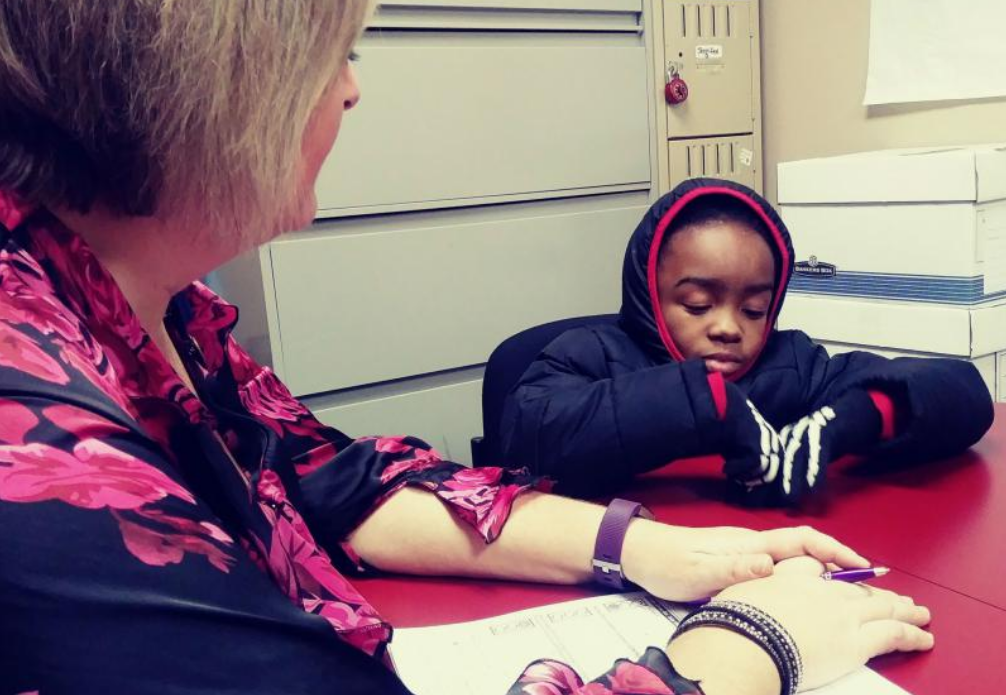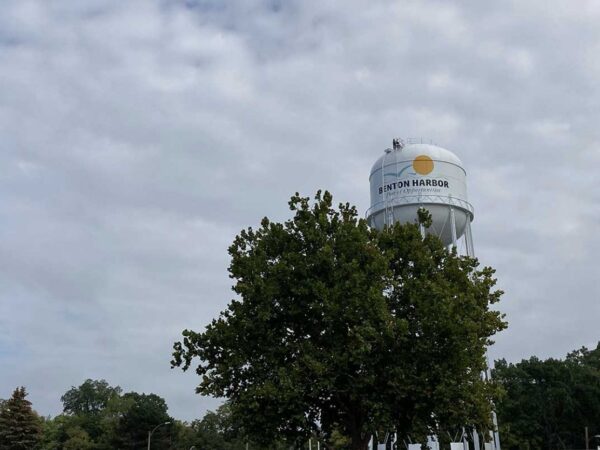
This story originally appeared on Great Lakes Today and is republished here with permission.
Part 2 in a series on environmental justice issues in the Great Lakes region.
At a pediatric clinic located in one of the poorest sections of Buffalo, 7-year-old asthmatic Victor Small sits with his mother Laticka.
The hood on his winter coat is pulled over his head, and as he fidgets with his black skeleton gloves, he begins to talk about what it’s like when he has trouble breathing.
“There’s something is wrong with my smelling,” he says.
He and his mother are reviewing a treatment plan with registered nurse Julie Cicero. She points out the inhalers Victor needs.
“So, your yellow zone, this is your caution zone and that’s where you’re actually having symptoms,” Cicero says, pointing to a chart that highlights his medication. “So if he’s coughing, he’s wheezing, tight chest, problems sleeping, playing, that’s his Albuterol. That’s his blue one … .”
But Victor’s mother says he isn’t always cooperative.
“He don’t like taking medicine,” she says. “He don’t like to listen. He thinks everything is a joke until he notices that he can’t breathe or something.”
She’s right, it’s not a joke.
Victor lives near a six-lane highway that runs between downtown Buffalo and the suburbs. Children in some neighborhoods along the Kensington Expressway have the city’s highest rates of asthma-related emergency department visits.
The EPA links asthma and other respiratory diseases to a chemical compound called nitrogen dioxide. It’s a gas byproduct emitted by vehicles — and it’s a burden for minority groups across America.
“Air pollution is not distributed at random,” says Julian Marshall, a University of Washington professor and co-author of a report on nitrogen dioxide emissions. “It tends to be higher at some locations, than others. And, those higher concentration locations tend to correlate, on average, with higher populations of minority groups.
“We’ve talked with urban planners and what they tell us, is that cities in the United States are segregated. They’re significantly segregated, especially by race, and I think what we see here is that same attribute, through the lens of air pollution.”
While nitrogen dioxide levels dropped nationwide from 2000 to 2010, exposure for minorities were still 37 percent higher than for whites. This disparity was especially high in states like New York, Michigan and Ohio.
“Well, we’re rust belt,” says Dr. Stanley Schwartz, who sees a lot of asthma patients as the head of the allergy department at the University at Buffalo.
As cities like Detroit, Cleveland, Milwaukee and Buffalo lost manufacturing jobs, some neighborhoods crumbled, he says.
“So, air pollution, lack of good sanitary conditions in inner cities — all contribute to why you many see a disparity,” he says. “And who lives in the inner city? Usually its underserved minority individuals, so that goes hand-in-glove.”
So, what can be done to address the persistent disparities?
Marshall says the nation should continue its push to reduce air pollution.
“We’re not going to get everyone to sort of pick up and move randomly, and I don’t think we need to,” he says. “That’s not the goal, the main finding here is when you clean the air, everybody benefits.”
Coming in Part 3: Unsafe water plagues Canada’s indigenous communities.




